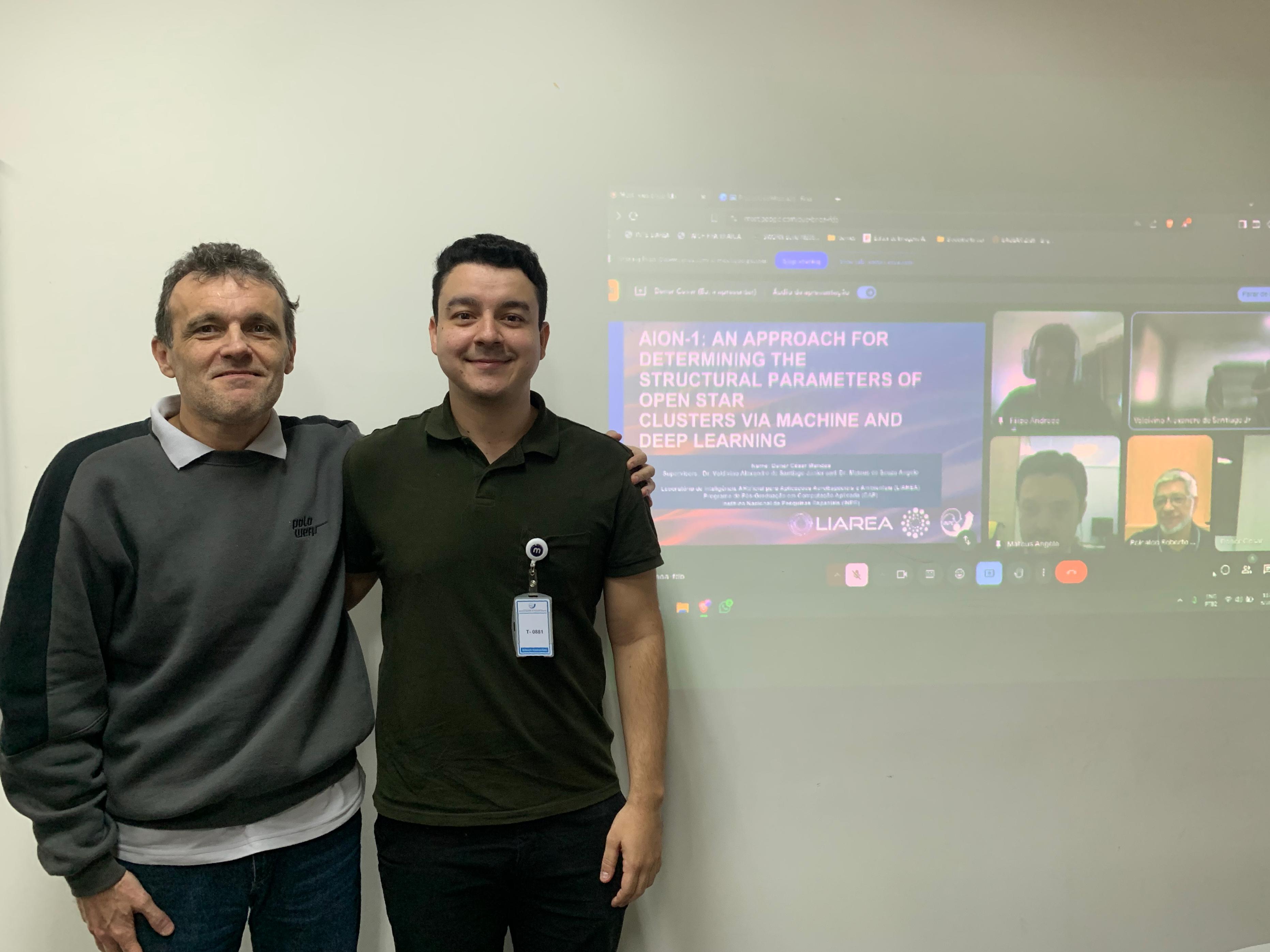Dener César Mendes, a researcher representing the Artificial Intelligence Laboratory for Aerospace and Environmental Applications (LIAREA), successfully presented his master's proposal titled "AION-1: An Approach for Determining the Structural Parameters of Open Star Clusters via Machine and Deep Learning." The presentation marks a significant step forward in the application of artificial intelligence (AI) to astrophysical research, particularly in the characterization of open stellar clusters.
The proposed model, AION-1, integrates machine learning (ML) and deep learning (DL) techniques with the King profile to analyze astrometric and photometric data from the Gaia DR3 catalog. The model leverages supervised learning to predict key structural parameters, such as central density, core radii, tidal radii, and background density, offering a more efficient and scalable solution compared to traditional methods like Markov Chain Monte Carlo (MCMC) and Maximum-Likelihood Poisson Regression, which are computationally expensive and prone to local minima.
The defense was supervised by Valdivino Alexandre de Santiago Júnior and Mateus de Souza Angelo, both from INPE and UFMG respectively. The examining committee, presided over by Reinaldo Roberto Rosa from INPE, included external member Filipe Andrade Ferreira from UFMG, and Thales Sehn Körting from INPE as the substitute. The panel members provided valuable insights and feedback, contributing to the overall success of the defense.

From left to right: Dr. Valdivino, Dener, Dr. Reinaldo, Dr. Mateus and Dr.Filipe
AION-1 provides an automated, data-driven framework that eliminates the need for repetitive iterations typically required in parameter exploration. Preliminary results showed the model's ability to effectively predict these parameters, with deep feature extractors focusing on the central regions of the star cluster images while less dense regions were accurately identified by external extractors.
This innovative approach addresses longstanding challenges, such as determining the tidal radii (rt), a parameter that is notoriously difficult to quantify. By automating the process of fitting King curves, AION-1 minimizes manual intervention and improves the scalability of open cluster structure characterization.
Dener’s defense was met with praise for his innovative application of AI in a critical area of astrophysical research, positioning him as a key figure in the future of space research and AI applications.

